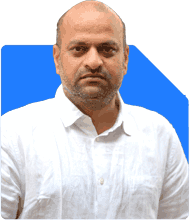Ramalingam Kalirajan |10872 Answers |Ask -Follow
Mutual Funds, Financial Planning Expert - Answered on Jun 18, 2024
He has an MBA in finance from the University of Madras and is a certified financial planner.
He is the director and chief financial planner at Holistic Investment, a Chennai-based firm that offers financial planning and wealth management advice.... more

I am 70 years old. I will be visiting UK for 6 months to be with my son. I am a heart patient. Would like to know about the best health insurance policy during my stay in UK which would cover procedures like angioplasty/ heart surgery and the premium I will have to pay for buying such a mediclaim.
Understanding Your Insurance Needs
Coverage for Heart Conditions
Given your heart condition, it’s vital to have coverage for cardiac procedures like angioplasty and heart surgery. Not all travel insurance policies provide this, so you'll need a specialized plan.
Duration of Stay
Since you'll be in the UK for six months, you require a long-term travel health insurance policy. Most standard travel insurance policies cover shorter trips, so ensure your policy matches your duration of stay.
Pre-Existing Conditions
Pre-existing medical conditions can complicate insurance coverage. Ensure the policy explicitly covers pre-existing conditions like heart disease to avoid any claim rejections.
Types of Health Insurance Policies
Travel Health Insurance
Travel health insurance is designed for travelers and provides coverage for medical emergencies, including hospitalization, surgeries, and sometimes even follow-up treatments.
International Health Insurance
International health insurance offers more comprehensive coverage, often similar to domestic health insurance plans. These plans are suitable for extended stays abroad and cover a wider range of medical services.
Specialized Senior Citizen Plans
Some insurance companies offer specialized plans for senior citizens, including those with pre-existing conditions. These plans might be more expensive but provide necessary coverage tailored to seniors.
Evaluating Health Insurance Plans
Coverage
Ensure the policy covers:
Hospitalization
Surgeries, including angioplasty and heart surgery
Doctor consultations
Prescription medications
Emergency medical evacuation
Network Hospitals
Check if the insurance plan has a network of hospitals in the UK. Network hospitals often provide cashless treatment, reducing out-of-pocket expenses.
Claim Process
The claim process should be straightforward and efficient. Look for insurers with a reputation for quick claim settlements.
Premium Costs
The premium cost will depend on factors like age, medical history, and coverage. Get quotes from multiple insurers to compare premiums and benefits.
Steps to Secure the Best Health Insurance Policy
Research and Compare
Start by researching different insurance providers and their plans. Use comparison websites to evaluate policies based on coverage, premiums, and customer reviews.
Contact Insurance Providers
Speak directly with insurance providers to clarify coverage details, especially concerning pre-existing conditions like heart disease. Ask about exclusions and limitations.
Read the Fine Print
Carefully read the policy documents to understand what is covered and what is not. Pay attention to terms related to pre-existing conditions and medical emergencies.
Seek Professional Advice
Consult a Certified Financial Planner (CFP) who specializes in health insurance for international travelers. They can provide personalized advice based on your specific needs and medical history.
Insurance Providers to Consider
Comprehensive Coverage Providers
Look for insurance providers known for offering comprehensive coverage, including major medical procedures. These providers often have plans tailored for long-term stays and senior citizens.
International Insurers
Some international insurers specialize in expatriate health insurance, offering extensive networks and comprehensive coverage. They understand the needs of international travelers and provide suitable plans.
Domestic Insurers with International Plans
Many Indian insurance companies offer international travel health insurance plans. These plans are designed for Indians traveling abroad and provide coverage for medical emergencies and pre-existing conditions.
Additional Considerations
Medical History and Documentation
Keep detailed medical records handy. Insurers may require a thorough medical history and recent health check-ups. Providing accurate information ensures appropriate coverage.
Emergency Assistance Services
Choose a policy that includes 24/7 emergency assistance services. These services can help with hospital admissions, medical evacuations, and coordination with local healthcare providers.
Renewal and Extension Options
Check if the policy offers easy renewal or extension options. This is crucial if your stay extends beyond six months or if you plan to travel again in the future.
Case Study: Example Scenario
Scenario
Mr. Sharma, a 70-year-old heart patient, plans to visit the UK for six months to be with his son. He needs health insurance covering procedures like angioplasty and heart surgery.
Approach
Research and Comparison:
Mr. Sharma starts by researching various health insurance plans. He uses online comparison tools to evaluate coverage, premiums, and reviews.
Contacting Providers:
He contacts several insurance providers to discuss his specific needs. He asks detailed questions about coverage for heart conditions and pre-existing conditions.
Consulting a CFP:
Mr. Sharma consults a Certified Financial Planner specializing in health insurance for seniors. The CFP helps him understand the nuances of different plans and recommends a few suitable options.
Reviewing Policy Documents:
Mr. Sharma carefully reads the policy documents of the shortlisted plans. He pays attention to exclusions, limitations, and the claim process.
Selecting the Plan:
Based on the advice from his CFP and his own research, Mr. Sharma selects a plan that offers comprehensive coverage, including hospitalization, surgeries, and emergency medical evacuation.
Finalizing the Purchase:
He finalizes the purchase by submitting necessary medical documents and completing the application process.
Outcome
Mr. Sharma secures a health insurance policy that covers his heart condition, ensuring peace of mind during his stay in the UK. He benefits from comprehensive coverage, a straightforward claim process, and 24/7 emergency assistance services.
Final Insights
Securing the right health insurance policy for your six-month stay in the UK is crucial, especially with your heart condition. Focus on finding a policy that offers comprehensive coverage, including hospitalization, surgeries, and emergency medical evacuation. Consult a Certified Financial Planner for personalized advice and carefully read the policy documents. With the right insurance plan, you can enjoy your time with your son without worrying about medical expenses.
Best Regards,
K. Ramalingam, MBA, CFP
Chief Financial Planner,
www.holisticinvestment.in
You may like to see similar questions and answers below
Roopam Asthana | Answer |Ask -Follow
Answered on Jul 01, 2022
Sanjib Jha | Answer |Ask -Follow
Insurance Expert - Answered on Apr 13, 2023
Milind Vadjikar | Answer |Ask -Follow
Insurance, Stocks, MF, PF Expert - Answered on Nov 16, 2024
Nayagam P P |10852 Answers |Ask -Follow
Career Counsellor - Answered on Dec 07, 2025

Research Career Prospects: IISc, IITs, and Beyond: For research-oriented careers, the Integrated M.Sc Physics program at Amrita provides an exceptional foundation. Amrita's curriculum specifically aligns with GATE and UGC-NET examination syllabi, and the institution emphasizes early research engagement. The faculty at Amrita actively publish research in Scopus-indexed journals, with over 60 publications in international venues within the past five years, exposing you to active research environments.
To pursue research at premier institutions like IISc, you would typically follow the PhD pathway. IISc accepts M.Sc graduates through their Integrated PhD programs, and with your Amrita M.Sc, you're eligible to apply. You'll need to qualify the relevant entrance examinations, and your integrated program's emphasis on research fundamentals provides strong preparation. The final year of your Integrated M.Sc is intentionally structured to be nearly free of classroom commitments, enabling engagement with research projects at institutes like IISc, IITs, and National Labs. According to Amrita's data, over 80% of M.Sc Physics students secured internship offers from reputed institutions during academic year 2019-20, directly facilitating research career transitions.
Placement and Direct Employment Opportunities: Amrita University boasts a comprehensive placement ecosystem with strong corporate and government sector connections. According to NIRF placement data for the Amrita Integrated M.Sc program (5-year), the median salary in 2023-24 stood at ?7.2 LPA with approximately 57% placement rate. However, these figures reflect general placement trends; physics graduates often secure higher packages in specialized technical roles. Many graduates join software companies like Infosys (with early offers), Google, and PayPal, where their strong analytical and computational skills command competitive compensation packages ranging from ?8-15 LPA for entry-level positions.
The Department of Corporate and Industrial Relations at Amrita provides intensive three-semester life skills training covering linguistic competence, data interpretation, group discussions, and interview techniques. This structured placement support significantly enhances your employability in both government and private sectors.
Government Sector Opportunities: UPSC, BARC, DRDO, and ISRO: Your M.Sc Physics degree opens multiple avenues for prestigious government employment. UPSC Geophysicist examinations explicitly list M.Sc Physics or Applied Physics as qualifying degrees, enabling you to compete for Group A positions in the Geological Survey of India and Central Ground Water Board. The age limit for geophysicist positions is 32 years (with relaxation for reserved categories), and the exam comprises preliminary, main, and interview stages.
BARC (Bhabha Atomic Research Centre) actively recruits M.Sc Physics graduates as Scientific Officers and Research Fellows. Recruitment occurs through the BARC Online Test or GATE scores, with positions in nuclear science, radiation protection, and atomic research. BARC Summer Internship programs are available, offering ?5,000-?10,000 monthly stipends with opportunity for future scientist recruitment.
DRDO (Defense Research and Development Organization) recruits M.Sc Physics graduates through CEPTAM examinations or GATE scores for roles involving defense technology, weapon systems, and laser physics research. ISRO (Indian Space Research Organisation) regularly advertises scientist/engineer positions through competitive recruitment for candidates with strong physics backgrounds, offering opportunities in satellite technology and space science applications.
Other significant employers include the Indian Meteorological Department (IMD) recruiting as scientific officers, and NPCIL (Nuclear Power Corporation of India Limited), offering stable government service with competitive compensation packages exceeding ?8-12 LPA for scientists.
Alternate Career Pathways: UPSC, CDS, and AFCAT: UPSC Civil Services (IFS - Indian Forest Service): M.Sc Physics graduates qualify for UPSC Civil Services examinations, with the forest service offering opportunities for science-based administrative roles with potential to reach senior government positions.
CDS/AFCAT (Armed Forces): While AFCAT meteorology branches specifically require "B.Sc with Maths & Physics with 60% minimum marks," the technical branches (Aeronautical Engineering and Ground Duty Technical roles) require graduation/integrated postgraduation in Engineering/Technology. An M.Sc Physics integrates well with technical qualifications, though you would need engineering background for direct officer entry. However, you remain eligible for specialized technical interviews if applying through alternate defence channels.
UGC-NET Examination: This pathway leads to Assistant Professor positions in central universities and colleges across India. NET-qualified candidates receive scholarships of ?31,000/month for 2-year JRF positions with PhD pursuit, transitioning to Assistant Professor salaries of ?41,000/month in government institutions. This route provides long-term academic career security with research opportunities.
Private Sector Technical Roles
M.Sc Physics graduates are increasingly valued in data science, software engineering, and technical consulting. Companies actively recruit physics graduates for software development, where strong problem-solving and logical reasoning translate to competitive packages of ?10-20 LPA. Specialized domains including quantum computing development, financial modeling, and scientific computing offer premium compensation. Your minor in Scientific Computing makes you particularly attractive to technology companies requiring computational expertise.
International Opportunities and Higher Studies Abroad
An M.Sc from Amrita facilitates admission to PhD programs at international institutions. German universities offer tuition-free or low-fee MSc Physics programs (2 years) with scholarships like DAAD providing €850+ monthly stipends. US universities accept M.Sc graduates directly for PhD positions with full funding (tuition coverage + stipend). These pathways require GRE scores and strong Statement of Purpose articulating research interests. Research collaboration opportunities exist with Max Planck Institute (Germany) and CalTech Summer Research Program (USA), both welcoming Indian M.Sc students.
Essential Skills and Certifications to Develop Immediately: Programming Languages: Start learning Python immediately—it's universally used in research and industry. Dedicate 2-3 hours weekly to data analysis, scientific computing libraries (NumPy, SciPy, Pandas), and machine learning fundamentals. MATLAB is equally critical for physics applications, particularly numerical simulations and data visualization. Aim to complete MATLAB certification courses within your first year.
Research Tools: Learn Git/version control, LaTeX for scientific documentation, and data analysis frameworks. These skills are indispensable for publishing research papers and collaborating on projects.
Certifications Worth Pursuing: (1) MATLAB Certification (DIYguru or MathWorks official courses) (2) Python for Data Science (complete certificate programs from platforms like Coursera) (3) Machine Learning Fundamentals (for expanding technical versatility) & (4) Scientific Communication and Technical Writing (develop through departmental workshops)
Strategic Internship Planning: Leverage Amrita's research connections systematically. In your third year, apply to BARC Summer Internship, IISER Internships, TIFR Summer Fellowships, and IIT Internship programs (like IIT Kanpur SURGE). These expose you to frontier research while establishing connections for future PhD or scientist recruitment. Target 2-3 research internships across different specializations to develop versatility.
TO SUM UP, Your Integrated M.Sc Physics degree from Amrita positions you exceptionally well for competitive research careers at IISc/IITs, prestigious government scientist roles at BARC/DRDO/ISRO, and international PhD opportunities. The program's scientific computing emphasis differentiates you in the job market. Immediate priorities: (1) Master Python and MATLAB within the first two years; (2) Engage in research projects starting year 2-3; (3) Target internships at premiere research institutions; (4) Prepare GATE while completing your degree for maximum flexibility in recruitment; (5) Consider UGC-NET for long-term academic stability. Your career trajectory will ultimately depend on developing strong research fundamentals, demonstrating consistent excellence in specialization areas, and strategically selecting internship and research opportunities. The rigorous Amrita program combined with disciplined skill development positions you for exceptional career success across multiple sectors. Choose the most suitable option for you out of the various options available mentioned above. All the BEST for Your Prosperous Future!
Follow RediffGURUS to Know More on 'Careers | Money | Health | Relationships'.
Nayagam P P |10852 Answers |Ask -Follow
Career Counsellor - Answered on Dec 07, 2025
Radheshyam Zanwar |6736 Answers |Ask -Follow
MHT-CET, IIT-JEE, NEET-UG Expert - Answered on Dec 06, 2025

Good luck.
Follow me if you receive this reply.
Radheshyam
Dr Nagarajan J S K |2576 Answers |Ask -Follow
NEET, Medical, Pharmacy Careers - Answered on Dec 06, 2025
Mihir Tanna |1090 Answers |Ask -Follow
Tax Expert - Answered on Dec 06, 2025
Ramalingam Kalirajan |10872 Answers |Ask -Follow
Mutual Funds, Financial Planning Expert - Answered on Dec 06, 2025
Radheshyam Zanwar |6736 Answers |Ask -Follow
MHT-CET, IIT-JEE, NEET-UG Expert - Answered on Dec 06, 2025
Radheshyam Zanwar |6736 Answers |Ask -Follow
MHT-CET, IIT-JEE, NEET-UG Expert - Answered on Dec 06, 2025
Radheshyam Zanwar |6736 Answers |Ask -Follow
MHT-CET, IIT-JEE, NEET-UG Expert - Answered on Dec 06, 2025
Dr Dipankar Dutta |1837 Answers |Ask -Follow
Tech Careers and Skill Development Expert - Answered on Dec 05, 2025
























